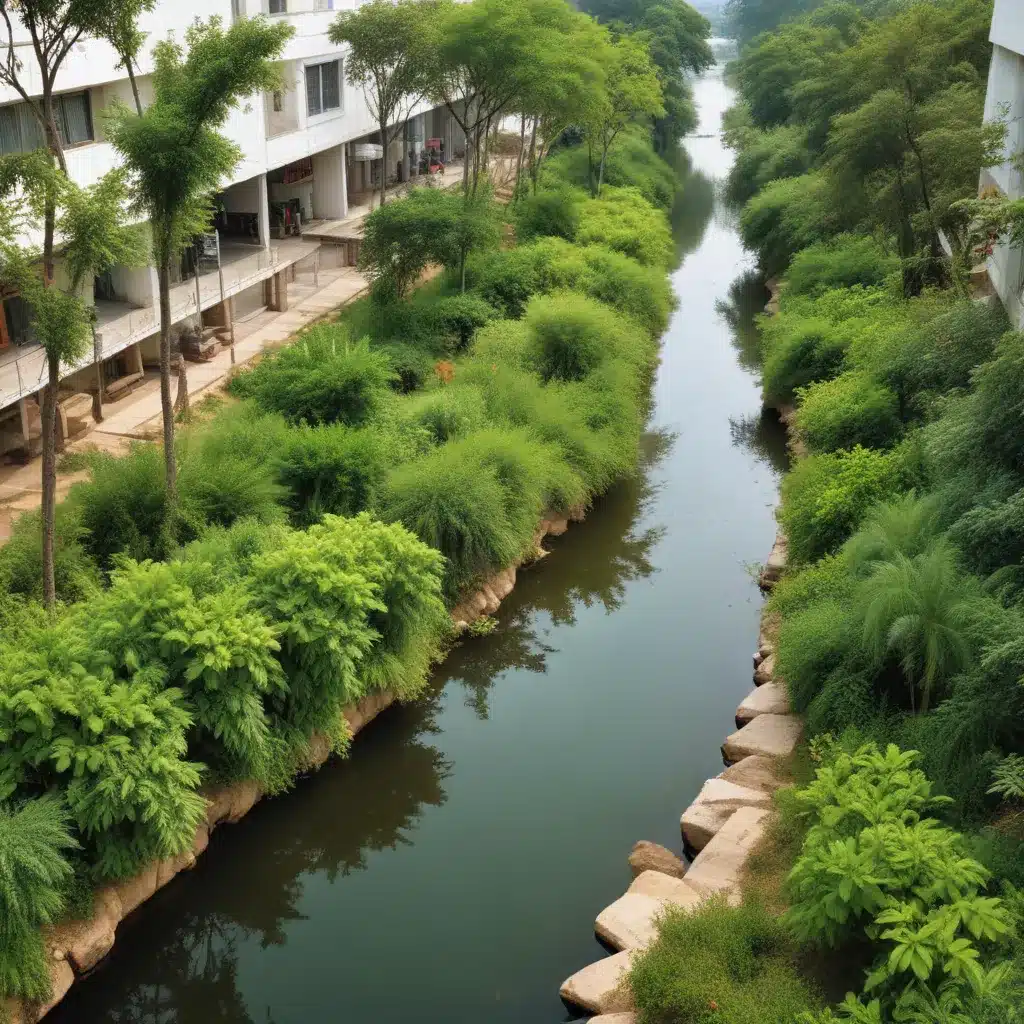
Embracing Nature’s Solutions for a Sustainable Future
In the bustling metropolis of Hyderabad, India, a remarkable transformation is underway – one that is reshaping the city’s landscape and paving the way for a more sustainable, biodiverse future. As a seasoned expert in water and sanitation services, community engagement, and advocacy, I am excited to share the inspiring story of Hyderabad’s urban greening initiatives and their profound impact on the city’s biodiversity and ecosystem services.
Reclaiming Urban Spaces for Nature
Hyderabad, once known for its concrete jungle, has embarked on a remarkable journey to reclaim its natural heritage. The city’s leaders have recognized the vital role that urban green spaces play in enhancing the overall well-being of its residents, and they have taken bold steps to integrate nature into the urban fabric.
One of the most notable initiatives is the city’s commitment to expanding its network of urban parks and gardens. Abandoned lots and underutilized spaces have been transformed into vibrant green oases, teeming with diverse flora and fauna. These new green spaces not only provide much-needed recreational opportunities for the community but also serve as crucial habitats for a wide range of species, from native birds and butterflies to small mammals and pollinating insects.
Restoring Urban Waterways
Alongside the urban greening efforts, Hyderabad has also undertaken a concerted campaign to restore its urban waterways. The city’s once-neglected streams, lakes, and ponds have undergone a remarkable transformation, with extensive efforts to daylighting and revitalize these vital aquatic ecosystems.
The restoration of these water bodies has not only improved water quality and flood management but has also created opportunities for the reestablishment of aquatic biodiversity. Native fish species, aquatic plants, and a wide array of freshwater invertebrates have started to thrive in these rejuvenated water systems, adding to the overall ecological richness of the city.
Promoting Urban Agriculture and Composting
Hyderabad has also embraced the power of urban agriculture and composting as a means of enhancing the city’s sustainability and biodiversity. The city has dedicated significant resources to the development of community gardens and urban farms, providing residents with the opportunity to grow their own food and connect with the land.
These urban agricultural initiatives not only contribute to food security and community resilience but also serve as valuable habitats for pollinators and other beneficial insects. Moreover, the city’s investment in composting programs has created a closed-loop system, where organic waste is transformed into nutrient-rich soil amendments, further nourishing the urban green spaces and urban farms.
Integrating Biodiversity-Friendly Policies and Practices
Underpinning Hyderabad’s urban greening efforts is a strong commitment to integrating biodiversity-friendly policies and practices into the city’s planning and development processes. The city has adopted comprehensive land-use and zoning regulations that prioritize the preservation and enhancement of natural habitats, ensuring that new developments and infrastructure projects do not come at the expense of the city’s ecological integrity.
Additionally, Hyderabad has implemented incentive programs and educational campaigns to encourage residents and businesses to adopt biodiversity-friendly practices, such as the installation of green roofs, the use of native plant species, and the creation of backyard habitats for wildlife.
Fostering Community Engagement and Stewardship
At the heart of Hyderabad’s urban greening initiatives is a deep commitment to community engagement and stewardship. The city has actively involved residents, local organizations, and community groups in the planning, implementation, and maintenance of its urban green spaces and waterways.
Through workshops, volunteer programs, and educational outreach, Hyderabad has empowered its citizens to become active stewards of their local environment. This sense of ownership and pride has not only strengthened the community’s connection to nature but has also fostered a deep understanding of the importance of biodiversity and ecosystem services in the urban context.
Measuring the Impact: Biodiversity Bounty and Ecosystem Services
The impact of Hyderabad’s urban greening initiatives has been truly remarkable. The city’s network of parks, gardens, and restored waterways has become a haven for a diverse array of plant and animal species. Rare and endangered species, such as the critically endangered Ganges River dolphin and the vulnerable greater flamingo, have been spotted in the city’s revitalized wetlands, a testament to the success of the restoration efforts.
Moreover, the city’s urban green spaces have delivered a multitude of ecosystem services that benefit both the environment and the community. These services include improved air quality, reduced urban heat island effect, enhanced stormwater management, and increased carbon sequestration – all of which contribute to the overall resilience and sustainability of Hyderabad.
Scaling Up and Sharing Best Practices
Hyderabad’s urban greening success story is not just a local triumph; it has the potential to inspire and inform similar initiatives in cities around the world. The city has actively shared its best practices and lessons learned, collaborating with other municipalities and urban planners to help them replicate the successes of Hyderabad’s water-wise urban greening approach.
By showcasing the power of integrating nature-based solutions into urban planning and development, Hyderabad is leading the way in demonstrating how cities can balance growth, sustainability, and biodiversity conservation. As the global population continues to urbanize, Hyderabad’s model offers a promising blueprint for creating vibrant, resilient, and biodiverse cities of the future.
Conclusion: A Thriving Urban Oasis
Hyderabad’s remarkable transformation from a concrete jungle to a thriving urban oasis is a testament to the power of strategic, community-driven, and nature-based solutions. By embracing urban greening, restoring urban waterways, and promoting sustainable practices, the city has not only enhanced its biodiversity and ecosystem services but has also fostered a deep sense of community ownership and pride.
As we continue to navigate the challenges of urbanization and environmental change, Hyderabad’s example serves as a shining beacon, inspiring cities around the world to prioritize the integration of nature into their urban fabric. Through collaborative efforts, community engagement, and a steadfast commitment to sustainability, Hyderabad has proven that it is possible to create cities that are both vibrant and biodiverse – a true testament to the power of water-wise urban greening.

